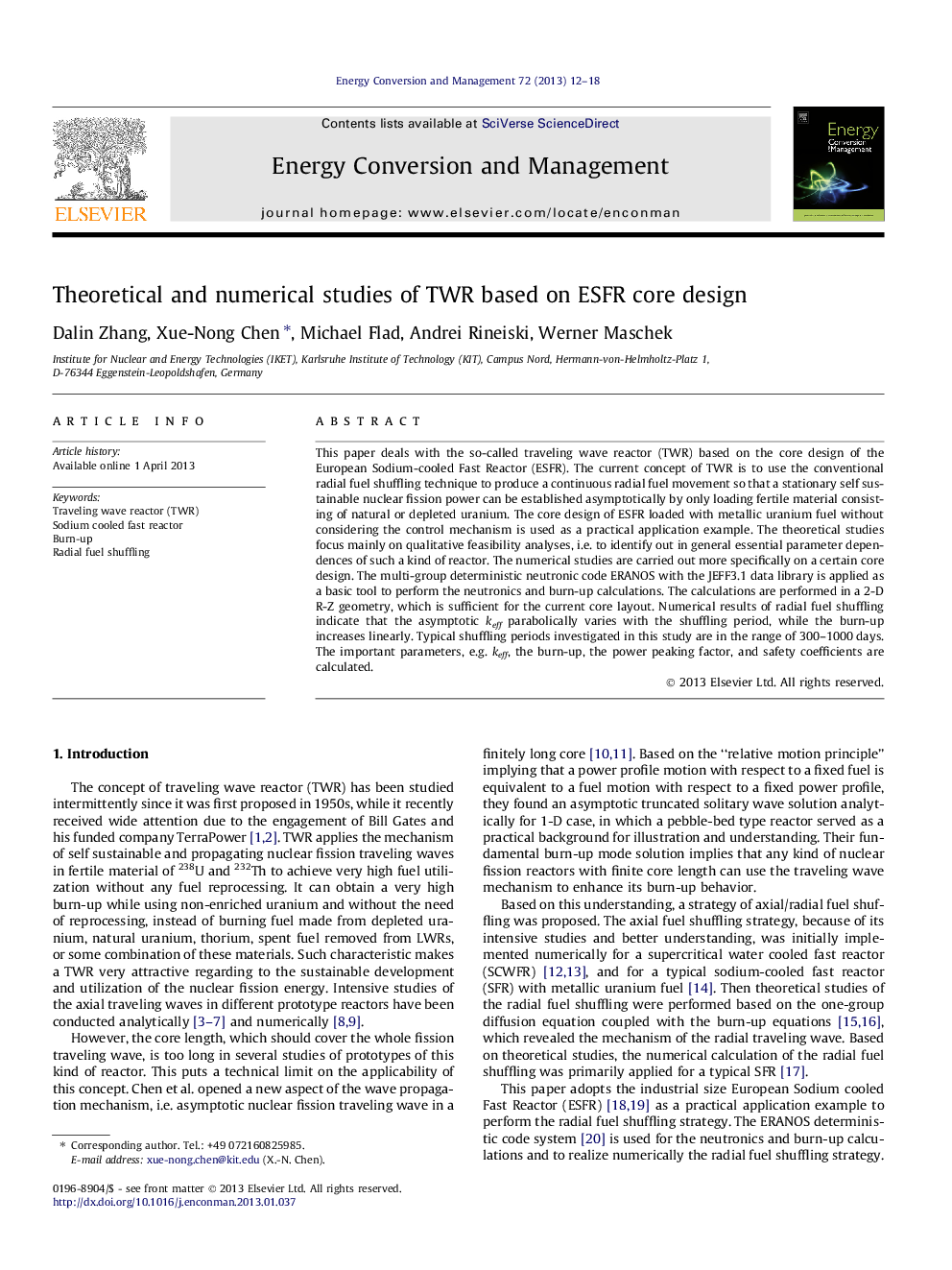| کد مقاله | کد نشریه | سال انتشار | مقاله انگلیسی | نسخه تمام متن |
|---|---|---|---|---|
| 772090 | 1462890 | 2013 | 7 صفحه PDF | دانلود رایگان |

• The traveling wave reactor (TWR) is studied based on the core design of the European Sodium-cooled Fast Reactor (ESFR).
• The conventional fuel shuffling technique is used to produce a continuous radial fuel movement.
• A stationary self sustainable nuclear fission power can be established asymptotically by only loading natural or depleted uranium.
• The multi-group deterministic neutronic code ERANOS is applied.
This paper deals with the so-called traveling wave reactor (TWR) based on the core design of the European Sodium-cooled Fast Reactor (ESFR). The current concept of TWR is to use the conventional radial fuel shuffling technique to produce a continuous radial fuel movement so that a stationary self sustainable nuclear fission power can be established asymptotically by only loading fertile material consisting of natural or depleted uranium. The core design of ESFR loaded with metallic uranium fuel without considering the control mechanism is used as a practical application example. The theoretical studies focus mainly on qualitative feasibility analyses, i.e. to identify out in general essential parameter dependences of such a kind of reactor. The numerical studies are carried out more specifically on a certain core design. The multi-group deterministic neutronic code ERANOS with the JEFF3.1 data library is applied as a basic tool to perform the neutronics and burn-up calculations. The calculations are performed in a 2-D R-Z geometry, which is sufficient for the current core layout. Numerical results of radial fuel shuffling indicate that the asymptotic keff parabolically varies with the shuffling period, while the burn-up increases linearly. Typical shuffling periods investigated in this study are in the range of 300–1000 days. The important parameters, e.g. keff, the burn-up, the power peaking factor, and safety coefficients are calculated.
Journal: Energy Conversion and Management - Volume 72, August 2013, Pages 12–18